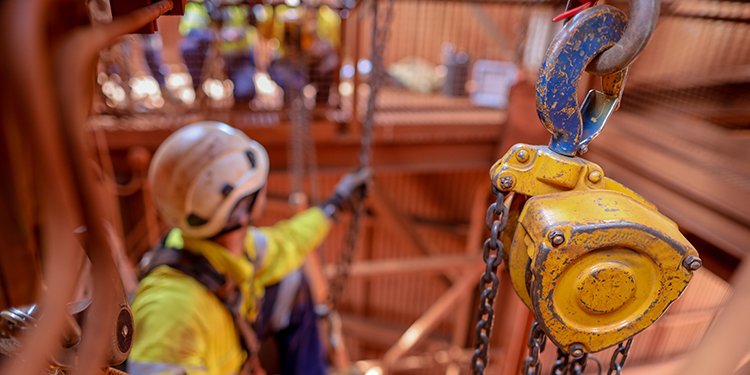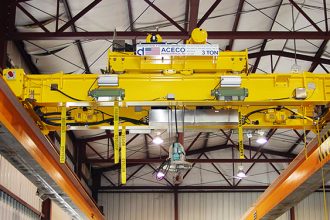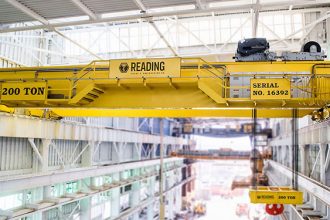Why A Hoisted Load Should Always Be Freely Suspended, Never Contained

One of the key safety best practices in using a hoist is to only lift a freely suspended load. According to the American Society of Mechanical Engineers’ ASME B30.16 Overhead Hoists (Underhung) standard, freely suspended means that the load is not guided or otherwise restrained from centering itself under the hoist. Why? A recent webinar presented by the Hoist Manufacturers Institute (HMI) explained why a hoisted load should always be freely suspended and never contained.
During the “Dos and Don’ts of Safe Hoist Operation” webinar, Joe Eudy, Manager of Engineering at HMI member Coffing Hoists, provided both an explanation and an example.
“The reason a hoisted load must be freely suspended is so that when an operator makes the pick, the mass of the load centers itself. The load should be directly beneath the center line of the pick point under the chain, or under the shank of the hook on a wire rope hoist,” he explained. If not, it will swing out of control — a dangerous hoisting condition known as “side-pulling.”

Never Use A Hoist To Lift A Load Cage
There are several dangers associated with attempting to hoist a contained, or guided, load that is not freely suspended, continued Eudy. He has more than 25 years of experience in investigating hoist accidents as a forensic specialist.
“One of the most dangerous hoisting situations involves a facility’s attempt to build a contraption that resembles a dumbwaiter or an elevator, usually for use with a chain hoist,” he said. “They then load the container with either people or products, then use the hoist to lift and lower it.”
Often, Eudy explained, an operation creates a metal cage with angle irons in each of the four corners. The corners are capped off with cross pieces that intersect to form a pick point where the hoist’s hook attaches. A shaft that extends between different levels of work platforms surrounds the cage.
“By creating a cage around a load that’s essentially being guided by a shaft, the hoisted load is no longer freely suspended,” he continued. “The load resting in the cage creates a concentrated mass in its center. When the hoist lifts the cage and the load, that concentrated mass causes the cage surrounding it to skew as it rises.”
Contained, Hoisted Loads Create Dangerous Overloading Wear
One effect of the cage skewing are unbalanced forces. These forces can exceed the rated capacity of the hoist, overloading it. A second scenario is that the skewed cage could drag or snag on the sides of the shaft.
“Most hoists have an internal clutch to prevent a failure in the event of a significant overloads. Both of these scenarios repeatedly create an overload situation, resulting in clutch wear. That, in turn, reduces the maximum weight that the hoist can safely lift. Ultimately, the continued use in these conditions will wear out the clutch to the point that the hoist can no longer safety lift its rated capacity,” explained Eudy.
That degradation of the hoist’s overload clutch increases the risk that it will fail, even under a load weighing less than maximum rated capacity. When such a failure occurs, the cage and load will drop to the ground. Not only does this significantly increase the chance of damage to the products and the facility, but it also will likely result in serious or fatal injuries to people in (and around) the cage.
“For facilities using a setup like this to lift and lower people, I’d call it a death trap. It’s that dangerous,” warned Eudy. “That’s why it’s a safe hoisting best practice to only lift freely suspended loads.”

Learn More About Hoist Safety Best Practices
In addition to hoist safety webinars and publications, HMI offers a variety of other technical resources. These include a comprehensive library of product guides; a hoist certification program; OSHA Alliance safety tip sheets, fact sheets and quick cards; multiple technical papers and more. Access these resources via HMI’s website at www.MHI.org/hmi.



